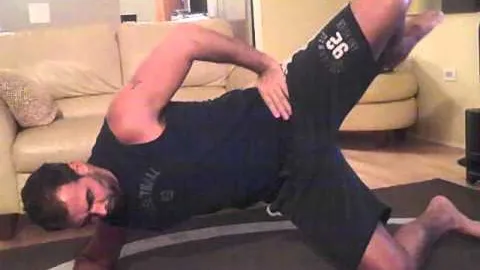
Side Lying Clam Raise: A Guide to Strengthen Your Hips
The side lying clam raise is an effective exercise for targeting the hip abductor muscles. It is commonly used in physical therapy and strength training routines to improve hip stability and prevent injuries.
The side lying clam raise is a simple and low-impact exercise that primarily targets the gluteus medius and gluteus minimus muscles. These muscles, located on the side of the hip, play a significant role in hip abduction, which is the movement of the leg away from the midline of the body.
While the exercise may appear easy, it is essential to perform it correctly to effectively engage the target muscles and maximize its benefits. This guide will provide step-by-step instructions on how to perform the side lying clam raise correctly, along with some variations and tips to help improve your form.
Starting Position: Begin by lying on your side with your legs stacked on top of each other. Place a resistance band just above the knees for added resistance.
Bend Knees: Bend your knees to 90 degrees, ensuring that your feet are in line with your hips and your ankles are stacked on top of each other. Rest your head on your lower arm for support.
Raise the Top Knee: While keeping your feet together and your hips stacked, lift your top knee as high as possible without moving your pelvis or lower back.
Controlled Lowering: Slowly lower your top knee back to the starting position, ensuring that you maintain control throughout the movement.
Repeat: Perform the desired number of repetitions on one side before switching to the other.
To optimize the effectiveness of the side lying clam raise and to prevent injury, it is crucial to avoid these common mistakes:
1. Allowing the Hips to Roll: Make sure to keep your hips stacked throughout the exercise. Avoid rolling your top hip forward or backward, as this can shift the focus away from the target muscles.
2. Using Momentum: Control the movement throughout the exercise. Avoid using momentum to lift your top knee, as this may diminish the activation of the hip abductor muscles.
3. Not Engaging the Core: It is essential to engage your core muscles throughout the exercise to provide stability and support. Ensure that your abdomen is gently pulled in, and your spine is in a neutral position.
4. Lifting the Foot off the Lower Leg: Keep your feet together throughout the exercise to maintain tension in the adductor muscles and avoid unwanted stress on the knees.
Once you have mastered the basic side lying clam raise, you can progress the exercise by introducing variations and additional challenges. Here are a few examples:
1. Resistance Bands: Increase the level of resistance by using a thicker resistance band or by placing multiple bands just above the knees.
2. Weighted Clam Raises: Hold a dumbbell or a medicine ball against the top knee to add extra resistance.
3. Side Plank with Clam Raise: Perform a side plank position while also raising and lowering the top knee. This variation adds a core strengthening component to the exercise.
Incorporating the side lying clam raise into your fitness routine offers a wide range of benefits, including:
1. Improved Hip Stability: Strengthening the hip abductor muscles helps improve hip stability, which is essential for performing various daily activities, sports, and exercises with proper form and reduced injury risk.
2. Injury Prevention: Weak hip abductors can contribute to various lower body injuries, such as IT band syndrome and knee pain. Regularly performing the side lying clam raise can help prevent or rehabilitate such injuries.
3. Enhanced Athletic Performance: Strong hip abductors are crucial for many athletic movements such as side lunges, lateral jumps, and lateral shuffles. By incorporating the side lying clam raise into your training routine, you can improve your overall athletic performance.
4. Improved Posture: Strong hip abductors contribute to proper alignment and balance of the pelvis, which can help improve overall posture and reduce the risk of lower back pain.
The side lying clam raise is an effective exercise for strengthening the hip abductor muscles and improving hip stability. By incorporating this exercise into your fitness routine, you can enhance your athletic performance, prevent injuries, and improve overall posture. Remember to perform the side lying clam raise with proper form and gradually progress the exercise as your strength improves. Start enjoying the benefits of this simple yet powerful exercise today!
If you're looking for a gym, fitness club or yoga studio, you've come to the right place.
You can find information about gyms in your area. Browse catalog of gyms and find gyms with classes which are you looking for.
On gym page you can find simple information like address, phone or website. You can find list of available classes. You can check availability of personal training or small group classes. On place page you can also see information about open hours.
You can find gyms near you with amenities, courts, studios and equipments.
Use our map to find gym at your city or district.
In Gym Navigator you can find list of exercises with movies for many body parts.
You can browse exercises catalog and find exercises the best of you.
You can also find exercises grouped into workout plans, which you can use to improve you body. Each routine show you exercises one by one and give you possibility to count you progress and count down rest time.